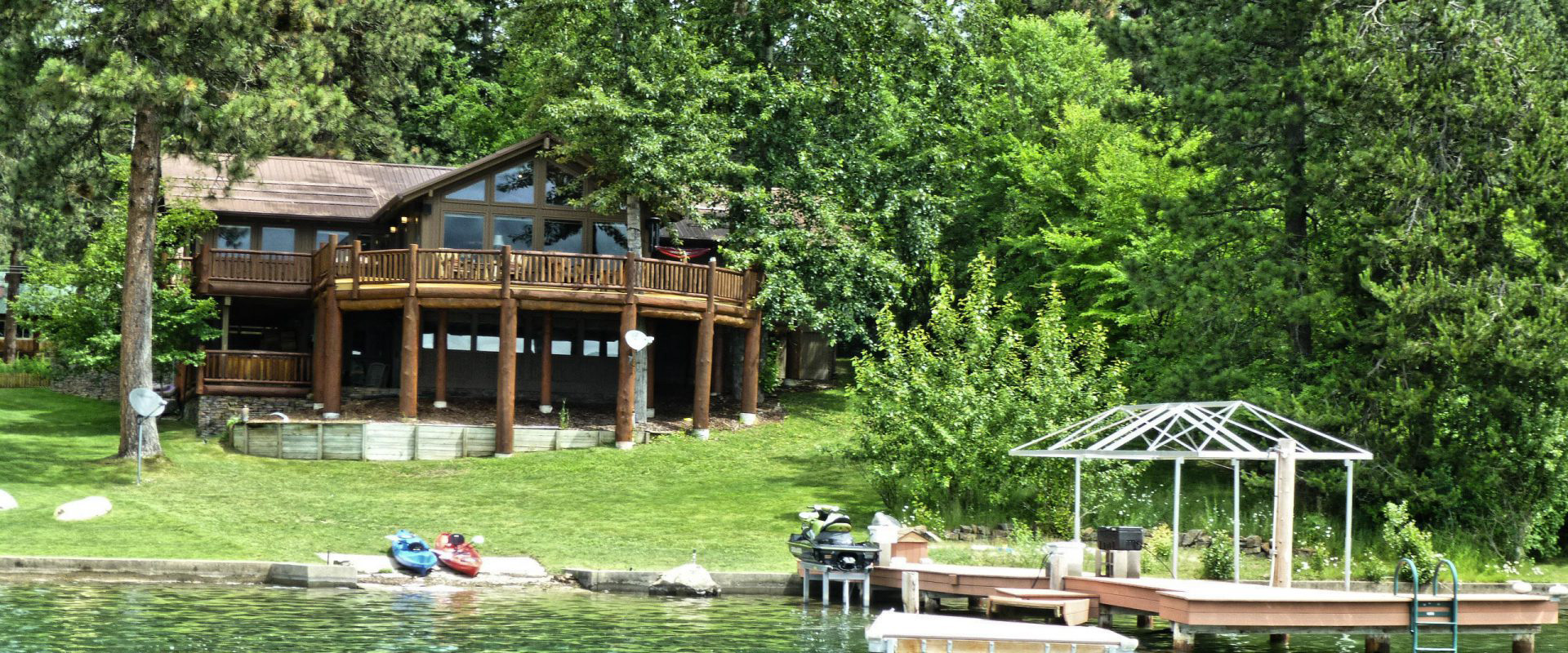All homes experience unavoidable risks from a common set of predictable problems. Pipes and roofs spring leaks, leading to water damage. Air conditioners or furnaces break, causing conditions in the home that lead to devastating growth of black mold or burst plumbing. Windows or doors blow in or are damaged, exposing the home to a range of destructive effects. And power goes out, leaving the home vulnerable to sump pumps backing up, refrigerators containing unsafe food, important settings on electrical equipment being changed, circuit breakers tripping or timers going off cycle. When these happen in your primary home, you’re there as your home’s first level of defense, protecting your investment by quickly sensing the problem and responding to it before it becomes a disaster. But a second home sitting vacant is on its own and vulnerable, as nobody’s there to notice a problem and do something about it. And a delayed response, even for a few hours, is the enemy of a happy ending.
So second homes are uniquely exposed to common problems, and up until now the options to manage your property have ranged from expensive and complicated to not well-suited for the job, or sadly some of both. Starting with the ultimate solution, you can avoid the problem altogether by converting your home from vacant to occupied by hiring a fulltime house sitter. Having someone live in your place when you’re not there provides continuous oversight and the potential to immediately respond to any problem that may arise. But “having people” comes at a pretty steep cost, averaging $35/day or $1,000/month and bringing along the challenges of finding the right person. It also adds expenses for utilities and the normal wear-and-tear that comes from someone living in the home.
A more common human based solution is hiring someone to make regular, periodic inspections of your home, usually on a weekly basis. For about $150/month a home watch professional will generally spend 30 minutes at your home, inspecting its interior and exterior, looking for obvious signs of problems. While much lower cost than a full-time house sitter, it still provides “boots on the ground” to inspect the property and an important local resource to help manage any problems that may crop up. The drawback to this approach is that it leaves the house completely on its own over 99% of the time, exposing it to extended periods of time without any monitoring.
A popular variant of hiring a professional home watch company is to enlist a nearby friend or relative to keep an eye on your place while you’re away. This less formal approach is typically much less expensive – ranging from free to some nominal compensation like buying dinner upon your return. And while great for providing a trusted local resource to help manage any problems that may arise, the actual periodic inspections are generally less frequent or formal, significantly increasing the time between a problem occurring and its being detected. And because of its informal do-me-a-favor nature, there is generally nobody accountable for bad outcomes.
The next range of solutions involves some type of home monitoring technology, an area that’s exploded over the past several years with the growth of the internet. And while there have never been more choices for systems in home security or remote home automation and control, they’re overwhelmingly focused on the needs of primary homes and rely heavily on the home having active internet access and Wi-Fi connectivity.
This can make sense for folks living in their homes, where many of the needs center on personal security and convenience. Detecting break-ins, streaming video from multiple cameras and letting you voice activate appliances and light switches can make sense to a large number of home owners. And for the companies building the solutions for primary homes, it provides them with a very large potential market to target and greatly simplifies their challenge and lowers their cost by assuming that they’ll be able to take advantage of an internet connection that’s already in the house.
But for unoccupied second homes, the solutions aren’t as good a fit. Wi-Fi’s $30-$50/month cost is expensive to leave on in a vacant home and worse yet is completely useless during a power outage. That’s really important for second homes as according to U.S. Department of Energy and FBI statistics you’re well over 100 times more likely to experience a power outage than you are a home break-in. And the consequences of an undetected power outage, unlikely when you’re living in the home but a certainty if it’s unoccupied, can be devastating. There are some general purpose security systems that are built around embedded cellular connections (a much better approach for vacant homes) but because they’re still overwhelmingly designed to provide security in primarily residences (detecting break-ins) they typically require expensive hardware, complicated installation and maintenance, and long term contracts with high monthly fees. Certainly worth considering for monitoring primary homes depending on the area and the fact that loved ones are always in residence, but not necessarily a great seasonal home fit.
Finally there’s the path of least resistance, hoping for the best. Easy to execute and initially low cost, the plan is built on a foundation of optimism and rationalization. “Everything has been fine so far”, “we’ve never had a problem”, “this is a quiet area, nothing ever happens here”, “somebody would let me know if something goes wrong”. It can be a great plan, until at some unknowable but certain to occur moment it isn’t. The only absolute certainty is that at some point a mechanical gremlin will combine forces with Mother Nature to create an initially small problem in your vacant home. With the hope plan you’re counting on it somehow fixing itself or coincidentally being discovered just in time by a kindly passerby – likely stretching hope a little too far.
If only there was an easy option for normal people whose second homes aren’t mansions full of priceless artwork to help them keep an eye on their places while they were away. Something for the vast majority of the 7.5 million owners of second homes in the United States that just looking for a little peace of mind without requiring them to have an engineering degree or take out another mortgage. Enter Sherlock, a house sitter (that we call HouseSetter since Sherlock’s a dog) that’s been specifically designed to be the perfect companion for your second home. He faithfully monitors for your home’s important, common risks by carefully watching its temperature, humidity and whether it’s lost power. He’s always on duty, 24 hours a day, 365 days a year – a house sitter that never sleeps (or raids your refrigerator). Sherlock stays in touch using his own special cellular connection, eliminating the cost and shortcomings of Wi-Fi and a backup battery that lets him stay on duty for days without power. He’ll send you (and anyone else you’d like) alert texts and emails anytime he detects a problem, and a weekly email even where there isn’t a problem just so you know that everything’s fine. He’s smart enough to send you a picture to show you that everything is just as you left it, and will let you check in anytime you’d like through his OnDemand feature. Installing Sherlock is as easy as taking him out of his box and plugging him in, and for the amazingly price of $120 and service as low as $5/month he’s the most cost effective (and vigilant) house sitter on the planet.
If you’ve got a second home, consider adding Sherlock to the family. He’s a new dog that we’ve taught some remarkable new tricks.


